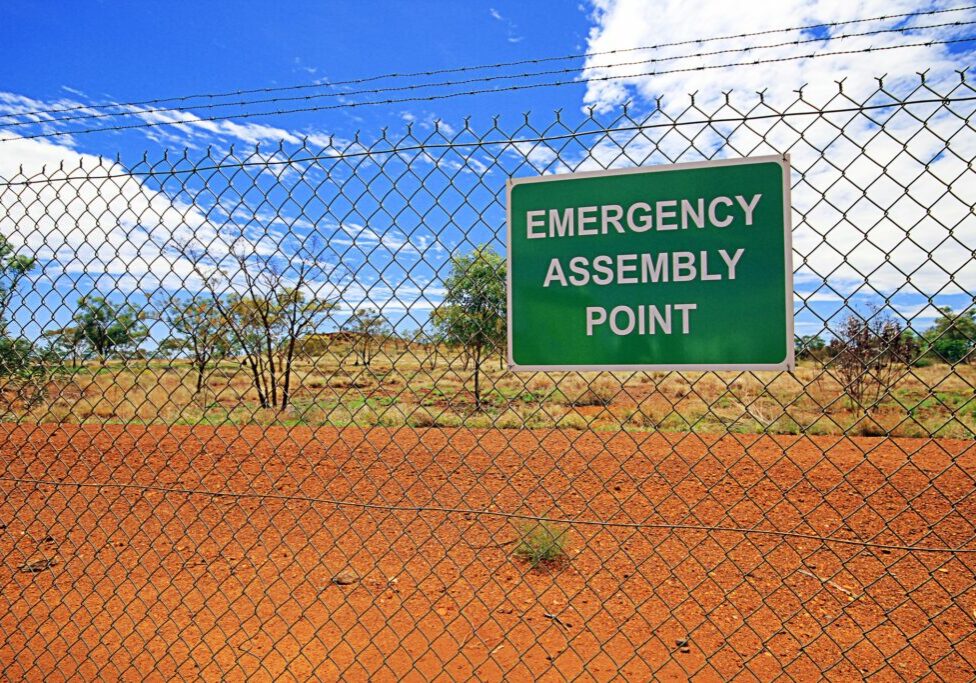Published in the November 2014 NJEA Review
by Frances Gilmore
In 2010, New Jersey mandated that all school districts establish school safety and security plans (SSSPs) in cooperation with police, fire departments, emergency management planners, and other commu-nity providers (N.J.S.A. 6A:16-5.1). The mandate’s initial focus was terrorism, but gradually it broadened to cover school shooters, bomb threats and other school violence, and eventually to include natural disasters, hazardous material releases and pandemics.
Local associations should familiarize themselves with their district plans, as well as with other laws and issues related to health and safety threats to their schools. Depending on the school’s location, the local association should become educated on environmental threats from the local production, use and transportation of hazardous materials (hazmat) beyond those listed in the state’s SSSP Minimum Requirements document (see More Information below).
A 2013 report by NJEA partner, the N.J. Work Environment Council (WEC), found that 19 of the 21 counties in the state have facilities that use large amounts of highly hazardous chemicals. Consult that report, referenced in the sidebar, to find any such production and waste facilities near your school.
LESSONS FROM PAULSBORO
Regarding hazmat transportation, a 2012 derailment of a train in Paulsboro, N.J. that released a cloud of carcinogenic vinyl chloride is a good example of a disaster for which schools and community were poorly prepared. Children were sent home from schools, some walking through a vinyl chloride fog. Sheltering in place would have been more appropriate. Even though schools are not designed to be sealed against chemicals, closing doors, windows and vents would have provided some protection.
In addition, the town and county Local Emergency Planning Committees (LEPCs) were ineffective and unprepared, even though trains carrying toxic chemicals cross the town four to five times a day. In high hazard industry or train locations, local associations should look at the emergency response plans of the LEPC and their schools SSSP side by side, and see if they are sufficient and consistent with each other with respect to schools.
An event like the Paulsboro derailment suggests that the SSSP hazard assessment may need expansion, and the plans on when to evacuate or shelter in place may need to be examined.
BAKKEN CRUDE OIL CROSSES NEW JERSEY
A recent boom in Bakken crude oil has led to a more than 4,000 percent increase in crude oil shipped by rail since 2005. Bakken crude is very explosive and is being shipped in dangerous, puncture-prone cars, resulting in catastrophic derailments and explosions in the U.S. and Canada. A July 2013 derailment in LacMégantic in Quebec resulted in explosions and fire that killed 47 people. A good deal of Bakken traffic goes through New Jersey. Local associations should be involved, ideally in coalition with environmental groups that have been seeking safer rail cars and disclosure of hazardous cargo for several years.
CURRENT REQUIREMENTS, AS SET OUT IN THE 2011 DOCUMENT, SSSP MINIMUM REQUIREMENTS, INCLUDE:
- Hazard assessment, based on analysis of actual risks, including history of crime, school violence, weather and local industry.
- Detailed explanation of how school personnel and community responders (fire, police, etc.) will protect students.
- Specific plans, as needed, for evacuation, sheltering in place, and lockdown.
- Description of command and control, communication, and decision-making protocols.
- Annual training of school staff.
- A fire and a security drill every month. Two security drills per year for each of four scenarios are required: active shooter, evacuation, lockdown and bomb threat.
- Annual plan review and improvement, taking into account experience with drills and actual emergencies, as well as changes in the school and community.
What can locals do?
- Determine whether your school’s SSSP and your state and county LEPCs’ chemical emergency response plans are up to date, adequate and consistent with each other.
- Ensure that staff members are included in evaluation of fire and security drills and incident follow-up.
Frances Gilmore holds a Master of Science degree in Industrial Hygiene from the University of Pittsburgh, is a consultant with the New Jersey Work Environment Council, and is a frequent partner with NJEA on school health and safety concerns.
FOR MORE INFORMATION
CHEMICAL HAZARDS IN YOUR AREA
2013 NJWEC report, Failure to Act: NJ Jobs and Communities Are Still At Risk from Toxic Chemical Disaster, with table of production and waste facilities by county. Go to www.njwec.org, click on “Resources.” Article from Earth Justice gives background of campaigns to improve puncture-prone rail cars.
Map of the 1,000 miles of CSX (largest freight shipper in the northeast) track in N.J. plus major rail yards and terminals.
To find industries with toxic chemicals in your communities fill in the form on top of the U.S. map.
Read the NTSB report on the Paulsboro derailment, citing failures of Conrail, local emergency planning and PEOSH.
N.J. REGULATIONS
NJSA 6A:16-5.1, “School Safety & Security Plans,: 2010: CRITICAL POLICY REFERENCE MANUAL. N.J. Department of Education (NJDOE), SSSPs:Minimum Requirements, 2011.
Multiple federal agencies Guide for Developing High-Quality School Emergency Operations Plans, 2013, broader than NJ guidelines: https://rems.ed.gov/docs/Guide_for_Developing_HQ_School_EOPs.pdf. The NJDOE has a site with resources and current events: state.nj.us/education/schools/security.
